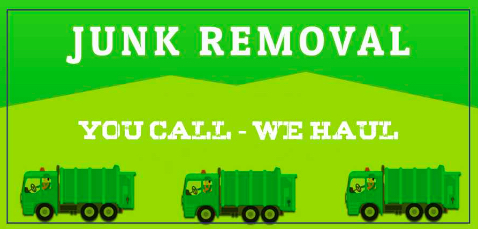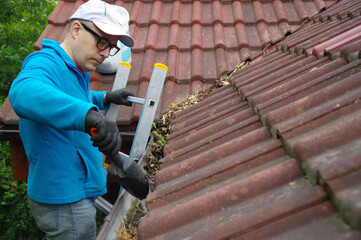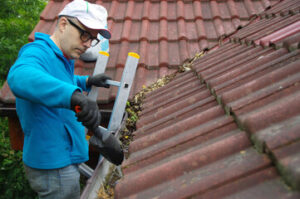If you have a large amount of rubbish that needs to be removed, you can hire a rubbish removal service. These companies can divide the garbage into different categories and recycle or dispose of it accordingly. Some of this rubbish may be hazardous and needs to be handled carefully. For example, it can be flammable or toxic. For more details, go to https://www.perthrubbishremoval.com.au/.
Hazardous Materials
 Many industrial operations generate hazardous waste materials. Hazardous wastes are a complex category of regulated wastes that must be handled and disposed of according to federal, state, and local regulations. In addition, the disposal of these wastes requires special precautions to prevent environmental damage. If not handled correctly, hazardous waste can lead to contamination of soil and water supplies. It can also harm human health, which may require emergency cleanup. To minimize the risk of environmental contamination, it is important to hire a rubbish removal service that specializes in handling and disposing of hazardous waste.
Many industrial operations generate hazardous waste materials. Hazardous wastes are a complex category of regulated wastes that must be handled and disposed of according to federal, state, and local regulations. In addition, the disposal of these wastes requires special precautions to prevent environmental damage. If not handled correctly, hazardous waste can lead to contamination of soil and water supplies. It can also harm human health, which may require emergency cleanup. To minimize the risk of environmental contamination, it is important to hire a rubbish removal service that specializes in handling and disposing of hazardous waste.
Hazardous wastes are usually generated by businesses that manufacture, process, or handle chemicals, such as pharmaceuticals, dyes and pigments, metals, plastics, fuels, and batteries. These wastes can also be generated by hospitals and laboratories. They are typically stored in a satellite accumulation area, which must be located near the point of generation. The waste must not be moved or relocated more than 55 gallons away from the point of generation, and no single used oil container can contain more than one quart of an acutely hazardous waste. This is in compliance with the Spill Prevention, Control, and Countermeasures (SPCC) Policy.
Some hazardous wastes are generated by residential and commercial generators, such as paints, stains, solvents, pesticides, old gasoline, and other fuels. These wastes are referred to as non-RCRA-Hazardous Wastes and must be treated differently than the typical business waste.
A variety of treatments are available for hazardous wastes to stabilize and solidify them for proper disposal. These processes include chemical, thermal, and biological treatment. Chemical treatment changes the molecular structure of a substance, while thermal and biological treatment change its physical characteristics. Other types of treatment include encapsulation in concrete, asphalt, or plastic, which can reduce its volume and make it less susceptible to leaching.
Once a hazardous waste is treated, it can be placed in a landfill. However, the process of treating hazardous waste can be expensive and time consuming, which makes it an inefficient solution for business owners who need to dispose of large volumes of waste material. Another option for these wastes is to recycle them. However, this is not always feasible for toxic wastes.
Injury Risk
Whether you’re a business owner with a lot of trash to dispose of, a contractor working on renovations or construction that produces a great deal of rubbish, or just a normal home dweller who needs to take out the trash, there is a certain amount of risk associated with this activity. Taking out the trash can result in injuries if proper safety techniques are not used, including safe lifting methods. Costly claims ranging from shoulder injuries to back injuries can be the result of improper rubbish removal.
The most common type of injury experienced by waste workers in Gweru is eye injuries due to smoke and dust. Other common injuries include cuts and bruises from handling equipment and falls. These risks can be minimized by proper training and adherence to safety guidelines. In addition, it is essential to report any safety issues to management so they can be corrected.
Environmental Impact
When rubbish is not properly removed, it has a detrimental impact on the environment. This is due to a number of factors, including land pollution, water pollution and air pollution. It produces harmful odours, which can affect the hygiene and health of people who live nearby. It also clogs drains, causing flooding and other environmental problems. It also encourages the growth of pests such as flies, rodents and cockroaches. Poor waste disposal can even cause serious health repercussions, such as cancer and other diseases.
The chemicals and toxins present in rubbish can leach into soil, which will damage plants and hurt animals that feed off these plants. They can also reach surface water sources, such as rivers and lakes, causing them to be contaminated. This will change the chemical levels in these waters, making them unhealthy for humans and other creatures to drink.
Another problem with rubbish is that it can produce greenhouse gases. These gases contribute to global warming, which can have negative effects on the planet. This is why it’s important to recycle rubbish whenever possible. You can do this by bringing your waste to the local recycling center or donating it to charity.
There are many different types of rubbish, and each type requires a different method of removal. Some of it can be recycled, while some needs to be disposed of in a landfill. A professional rubbish removal service will know how to safely remove and dispose of your waste. They will also help you recycle or donate as much of your rubbish as possible, which will reduce its environmental impact. It will also save you time and money. It is much easier to hire a rubbish removal company than it is to take on the task yourself. However, you should consider the costs and safety risks involved before hiring one. There are many companies that provide rubbish removal services, but you should carefully research them to find the right one for your business. You should also be aware of any hidden fees or long wait times that may be associated with these services.
Cost
If you have a large amount of rubbish to get rid of, hiring a junk removal company can be cost effective. The price for rubbish removal can vary depending on the size of the job, where you live, and the services provided by the company. For example, larger jobs with more complex rubbish removal may require the use of heavy machinery or extra staff members. This can increase the overall cost of the job.
There are several different types of rubbish that can be removed by rubbish removal companies. For instance, some of the most common items include electronics, household waste, and green waste. Other items that can be removed by rubbish removal companies include hazardous waste, yard waste, and construction debris. Some rubbish removal companies offer special recycling programs that help reduce the amount of waste sent to landfills.
Some rubbish removal companies will charge by the truckload or cubic meter. Others will charge by the hour. This allows you to control the cost of your rubbish removal service. However, it is important to choose a rubbish removal company that offers competitive rates and excellent customer service. This way, you can be sure that you are getting the best value for your money.
Local sanitation departments can provide a limited rubbish collection service for a low fee. But, they can be inconvenient and expensive due to long wait periods. In addition, they often have restrictions on what kinds of garbage they will accept. This makes hiring a rubbish removal service an attractive option for those who want to avoid the hassle of taking their trash to the curb.
Many people struggle with a big cleanup project, whether at home or the office. It is easy to get overwhelmed by the task and not know where to start. Whether you need to clean out the garage or get your workspace ready for an office move, finding a reliable rubbish removal company in Staten Island can save time and money.
A rubbish removal specialist can come in and do the work for you, but be sure to ask them to take a look at the job site before quoting a price. They will need to see the volume and type of rubbish you have before giving an accurate estimate.


 Site Preparation
Site Preparation
 You must apply a non-toxic, abrasive cleaning solution to clean your roof. This can be purchased online, and some manufacturers sell specialized cleaning tools and rinsing solutions. You will also need a full-body harness and access to a garden hose. Some roof cleaning methods call for using bleach, bleach, and water or power washing the roof on the lowest setting. If you do decide to go with this method, be sure to follow the instructions carefully.
You must apply a non-toxic, abrasive cleaning solution to clean your roof. This can be purchased online, and some manufacturers sell specialized cleaning tools and rinsing solutions. You will also need a full-body harness and access to a garden hose. Some roof cleaning methods call for using bleach, bleach, and water or power washing the roof on the lowest setting. If you do decide to go with this method, be sure to follow the instructions carefully.